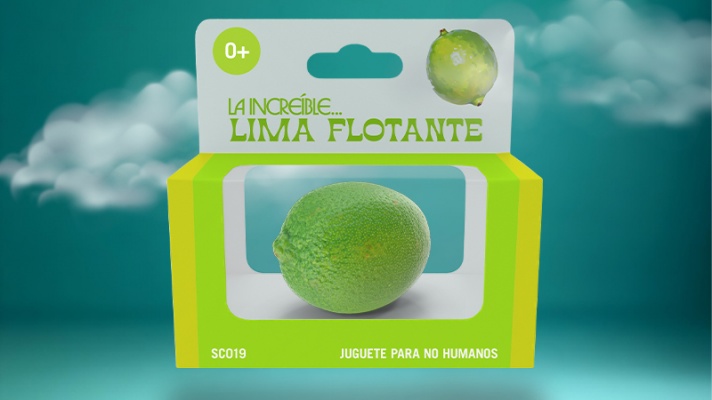Descripción de la Exposición
This exhibition, has a procedural title referring to painting as an approximation to the grind of winds and raging waters, all culminating unexpectedly in calm and monochrome landscapes (which seem) matter.
So let us move on to a first conclusion or finding (reversed): it would be somewhat short-sighted for the title to be procedural, informative, metaphorical, to be a metaphorical definition of painting. The painting could be an echo of the wind and raging waters substance (the author's readings are often linked to historical and anonymous tenebrous journeys, or biographies of bizarre creatures in this context, such as Hitler or Wagner…), but the painting is, diversely, no doubt of that, an abandoned echo of yourself, an echo of nothing. Now, what we see are not paintings that represent winds, storms or stormy seascapes, we see the opposite: it is the painting that will silence all that, in monochrome canvases (however, we are suspicious of its layers, though basic, simple and effective - because they fade away), in identical compositions from canvas to canvas, but, in the end, very different (just lift one and lie down - horizontal – another one: radical difference).
The imagination is therefore stored “inside” the painting, on the outside (painting's skin) everything seems calm. However, here is another achievement of this painting: there is no interior, no exterior, no skin, there are surfaces that seem thick and material, but they get rid of the matter - they are obliged to, because the author, with spatulas and knives, soothes and flattens the surface. To erase is to produce, to do. Palimpsest. I erase, I cover for the image to be born. But here there are no images here. I would say that Paulo Quintas invented a very coherent, inexplicable type of image: the pictorial image.
Now, it is the winds and raging waters that aspire to be painting, and even become so, it is not the painting that echoes the revolt of the waters or that of the Melville’s white whale... But all this goes through this painting, it is not present in it, but never disappears from it either.
I quoted Deleuze, elsewhere. Logique du Sens’s Deleuze and the chapter devoted to the schizophrenic and the "child", to Artaud and his disdain for surfaces as an appeasement of the intellect, either in literature or in the arts in general. What is really interesting about this painting is that, in its thickness of supports and materials (and, sometimes, chromatic luminosity), this painting is always surface, but a pictorial surface, that is, a surface of invisible layers, and that is what provides it with great discursive (pictorial) relevance: the layers of a painting must therefore exist in our mind and will be built by us, it is not the painter who makes (or has to make) a “guided visit” to the painting that he found. The painter must deceive the observer: he reveals that the painting makes itself, but it is him, the painter, who determines it.
The painter makes the painting that seems to make itself. He forces it to do it itself. Therefore, he does everything and the simpler the process, the less painting is “done” - and Paulo Quintas enjoys “doing little” and choosing basic procedures.
Caravaggio hid more (if we look now at the marks or incisions made with compass, in Quintas’ work). The Lombardo abozzo, the first white layer support (and the first white layer is also frequent in Paulo Quintas), was subject to incisions (like these paintings), the incisions signaled Caravaggio's drawing process, the points from where the compositions were coming.
In Paulo Quintas, compass drawing (usually simple geometric figures) integrates pictorial matter as much as oil or color, therefore, structural element of language. This painting is individualized in unusual “games”: there are cases where the image results from the contact between canvases that are abandoned outdoors (street) for extended time being (years). In other cases, it is the last spatulated layer that reveals the final image by erasing the one below. That is: I can only see what the bottom layer if I cover it. Paradox again.
The oil long periods of drying allow nothing to be lost: one layer exists over another and above all a liquid medium can emerge, can be released. The formless generated is then subjected to a compass drawing that commands the spatulated gesture: sometimes a circle appears, but no form is used here in its entirety: this circle is broken in some parts, in fact it is present even that in a scarce portion. It exists, but in fragment.
Incidentally, the circle, without beginning or end, thus peculiarly makes this painting circular around itself. And in the end, it turns out to be unprecedented, unpredictable layer. But an unpredictable chosen among many and many hypotheses. The painter chooses a type of unpredictability. The only possible. Each canvas is the “right screen”. It is a statement solid and torn by the willing of the painter. The matter fades. The form remains. Immaterial. Tactile. Exact.

Exposición. 16 abr de 2025 - 11 may de 2025 / Centro Botín / Santander, Cantabria, España

Formación. 08 may de 2025 - 17 may de 2025 / Museo Nacional Centro de Arte Reina Sofía (MNCARS) / Madrid, España